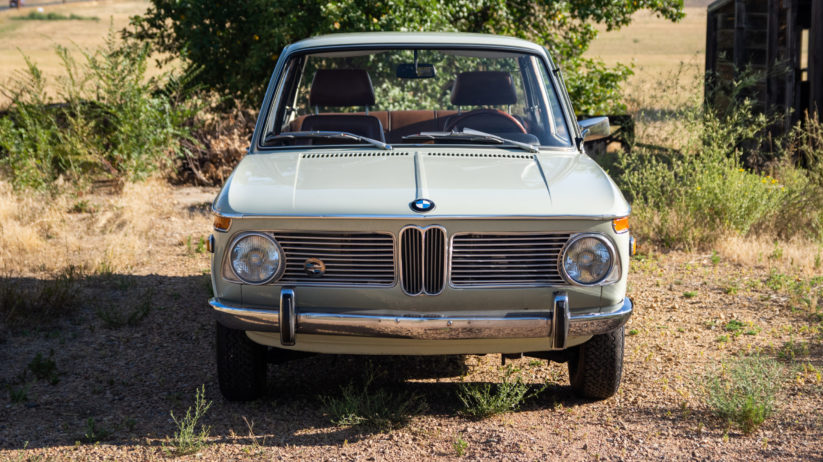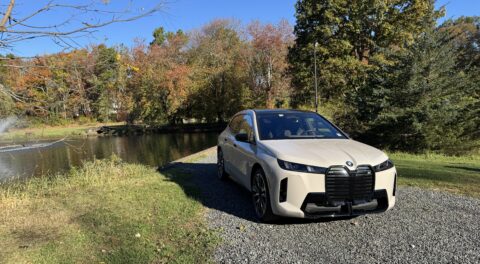Sometimes there are certain cars that you just connect with. It isn’t because they are the fastest, or the prettiest, or even unique; there is just something intangible about them—something special.
However, that special quality isn’t always immediately apparent. It may present itself after a long drive, or after you spend some quiet time in a dim garage late at night, visually digesting the car’s lines. Perhaps it’s the story behind the car, or perhaps it’s a sum greater than its parts. But really, the reason doesn’t matter; what matters is how those certain cars make you feel—and that’s why we partake in this madness of car obsession while the rest of the world muddles along in their A-to-B transportation.
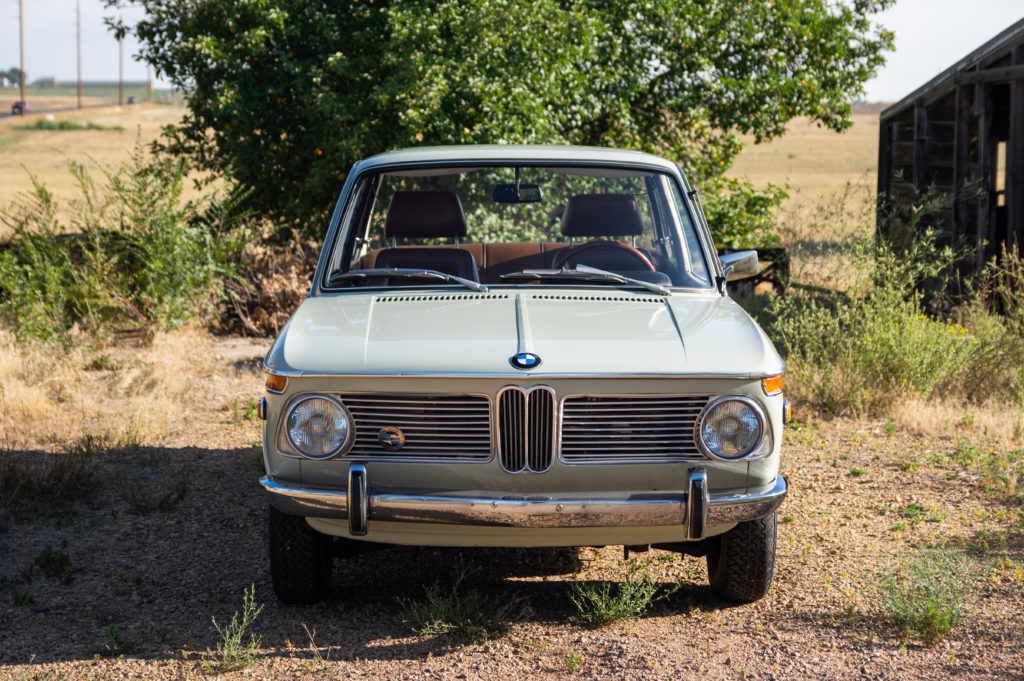
A 1969 Florida Green 1600-2.
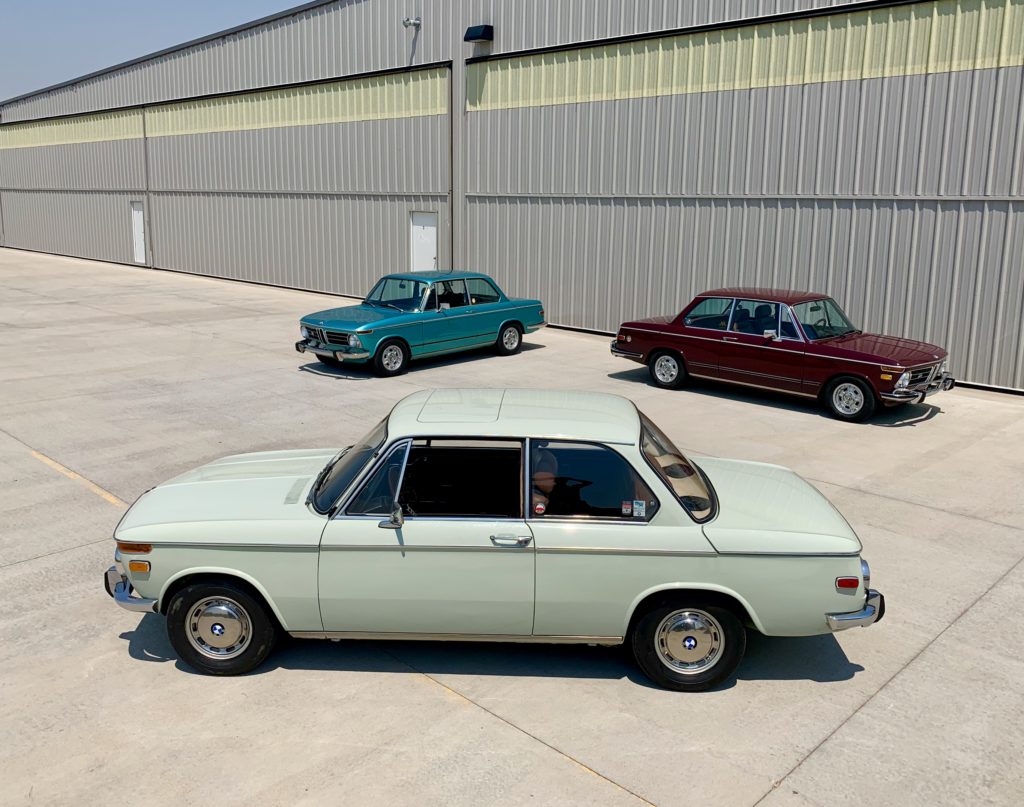
The little 1600 stood out against the pair of 2002tii’s.
A few months ago, three BMW 02 Series sedans found their way into my life. The list included a Malaga 2002tii, a Turquoise Green (Turkis in 2002-speak) 2002tii, and a Florida Green 1600-2. In the company of such greatness as a pair of 2002tii’s, you wouldn’t think that a humble 1600 would make such an impression, but it did. As the cars rolled off the truck, my brain was awash with stimulation.
Malaga is one of the best 2002 colors ever, and Turkis is rare—one of those colors that has to be seen in person to be appreciated. But while the tii’s got my immediate attention, the little Florida Green 1600 had a certain presence that the others didn’t. It was wearing simple “steelie” wheels with chrome hubcaps, and it didn’t have the chrome beltline trim that the later 2002tii’s got. I also noticed that its earlier grilles were slightly different from the others, a detail that had eluded me until seeing early- and late-model 02 Series sedans parked next to each other.
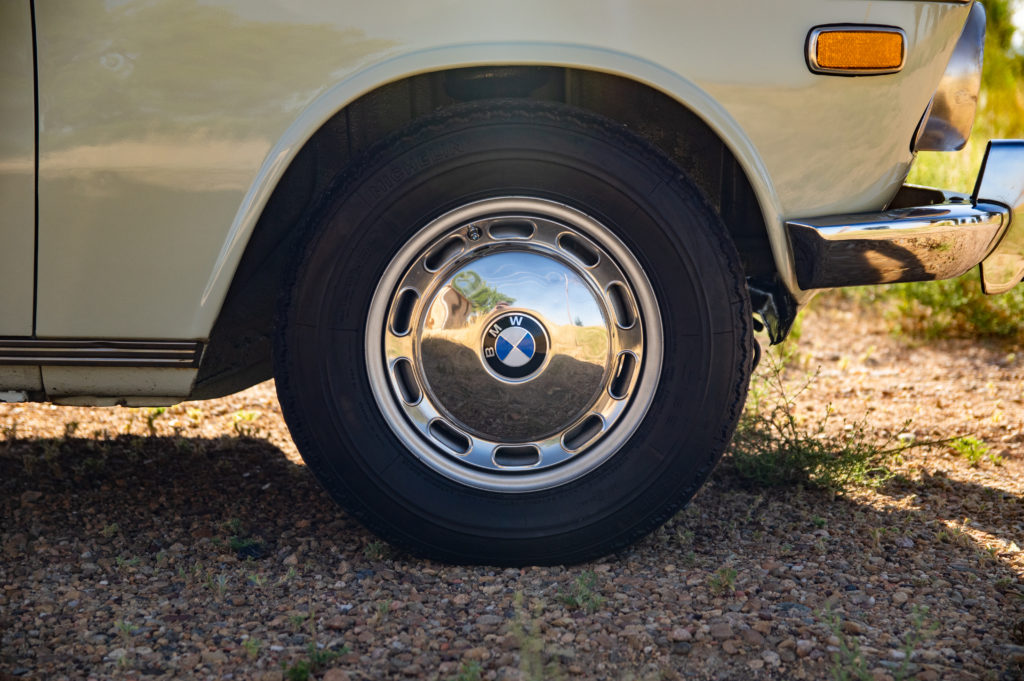
“Steelie” wheels under chrome hubcaps.
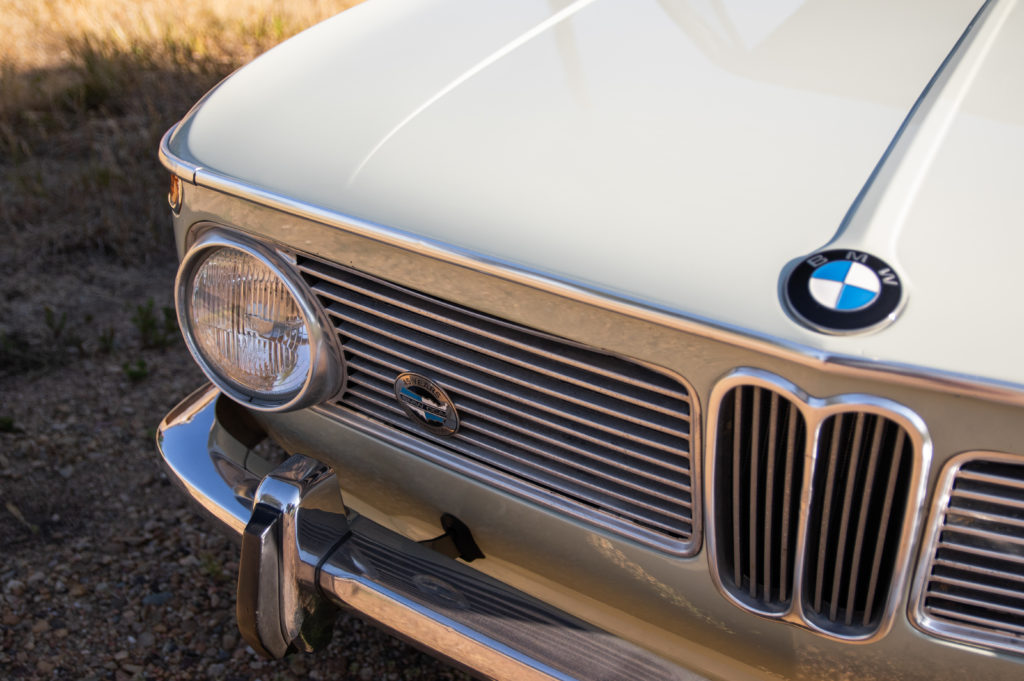
Early 02 Series grilles
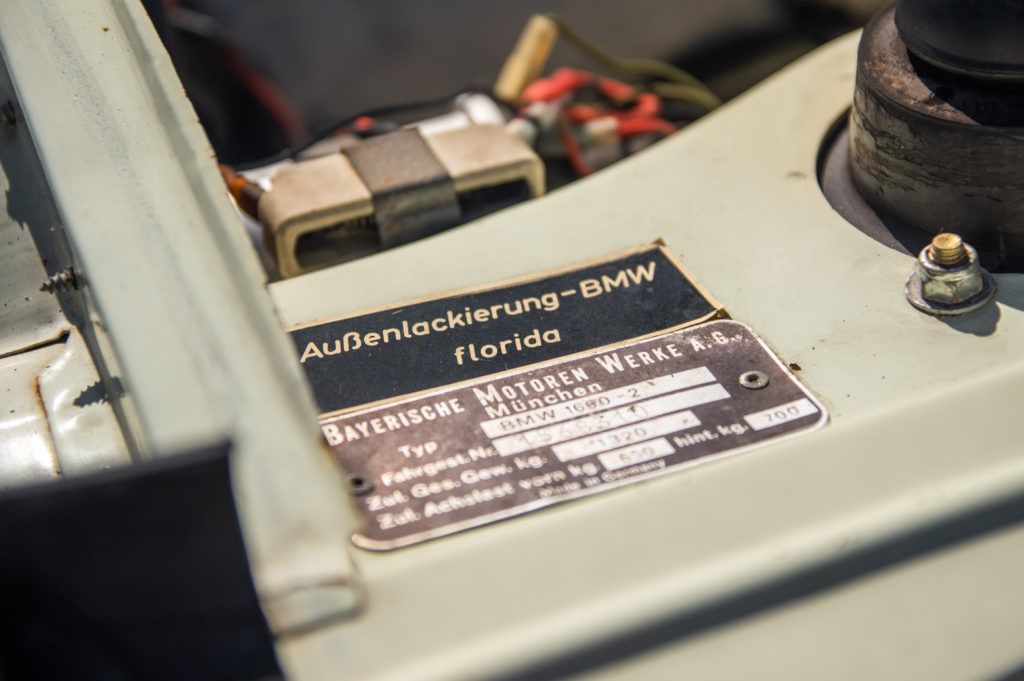
Florida Green
Florida Green is an early 02 Series color (1970 was its last year)—one that is actually more white than green, but with enough green to stand out. It has a wonderful subtlety to it, especially when complemented by its dark Tobacco Brown interior. (Well, most of it was Tobacco. The door cards were the original dark-brown Tobacco, but the seats had been refinished in the slightly lighter Saddle.) The front seats were a pair of E21 Recaro sport seats, some of the best seats for any classic BMW. A three-spoke wood-and-chrome steering wheel was the centerpiece; it was prominently displayed in front of an early silver-ringed 02 Series gauges.
I love wooden steering wheels—real ones, the kind that will splinter your heart if you crash—but they also cement your time travel back to the sports-car age.
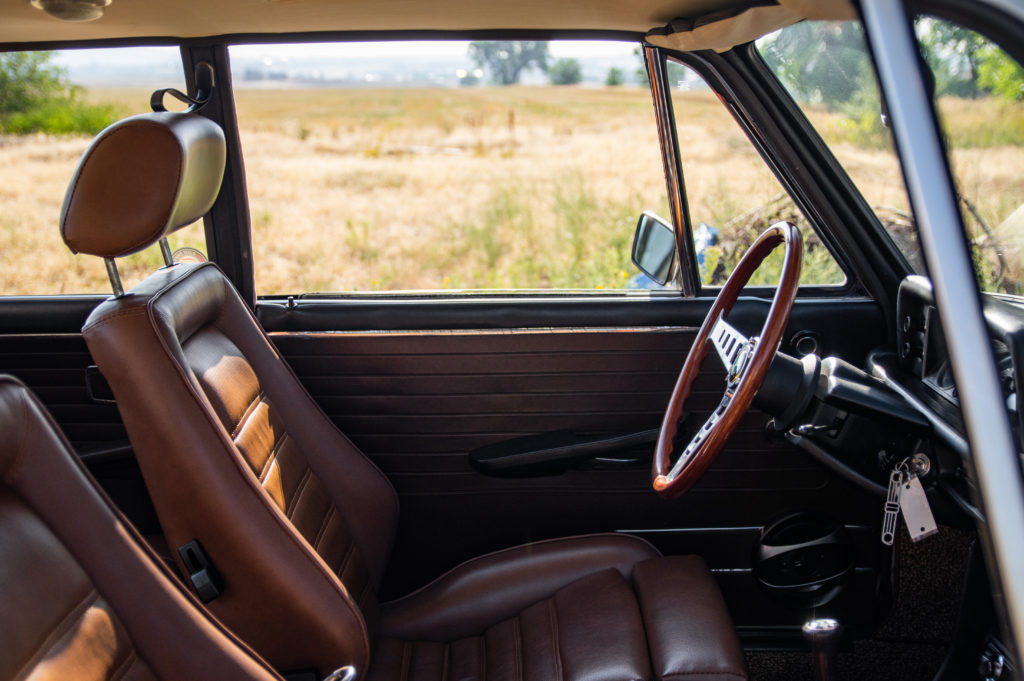
Saddle Brown Recaro seats from an E21
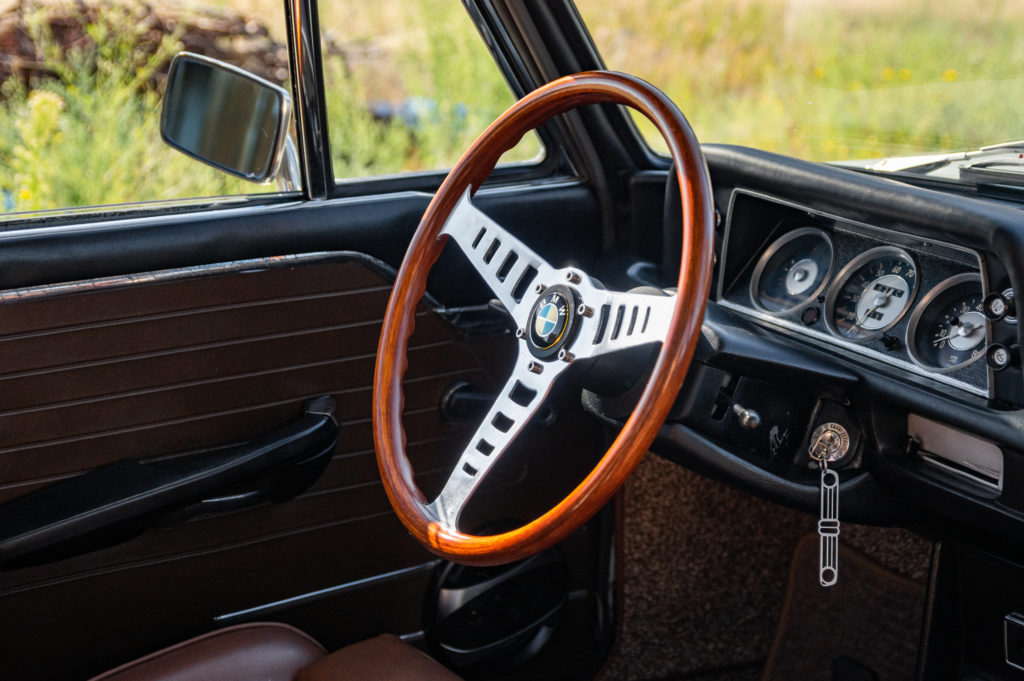
A proper wooden three-spoke steering wheel
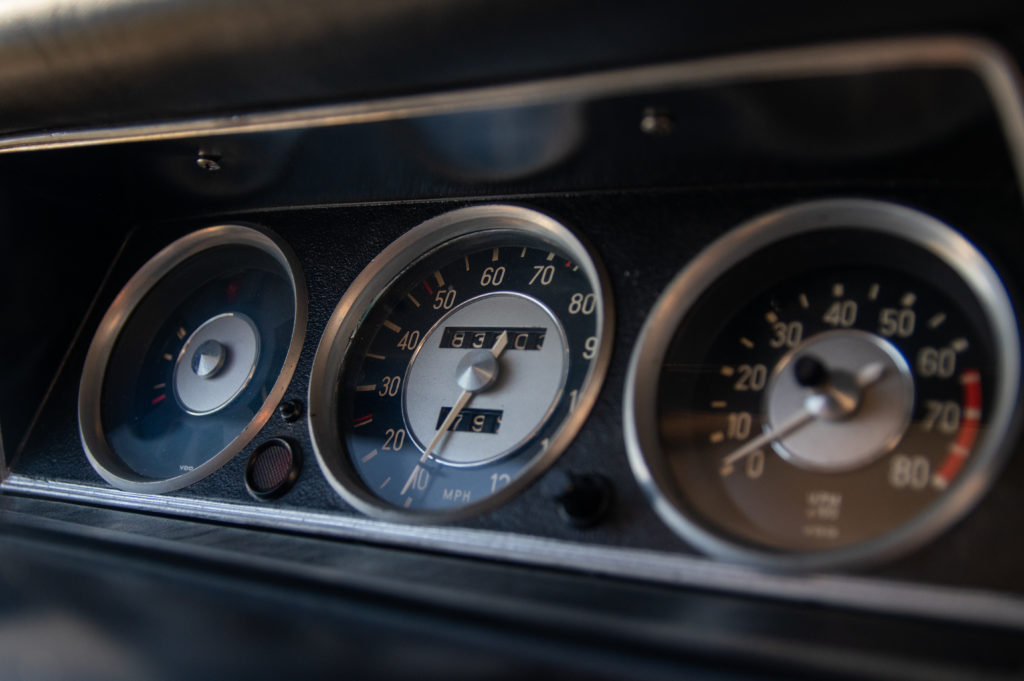
Early 02 Series had silver instrument-cluster rings.
At some point, someone had fitted an aftermarket shoulder-harness seat-belt system that used a center-mounted raised-loop ring as the anchor point. In practice, it was clumsy compared to a modern inertia-reel belt and buckles, but the silver loop continued the chrome theme and solidified my time travel back to 1969.
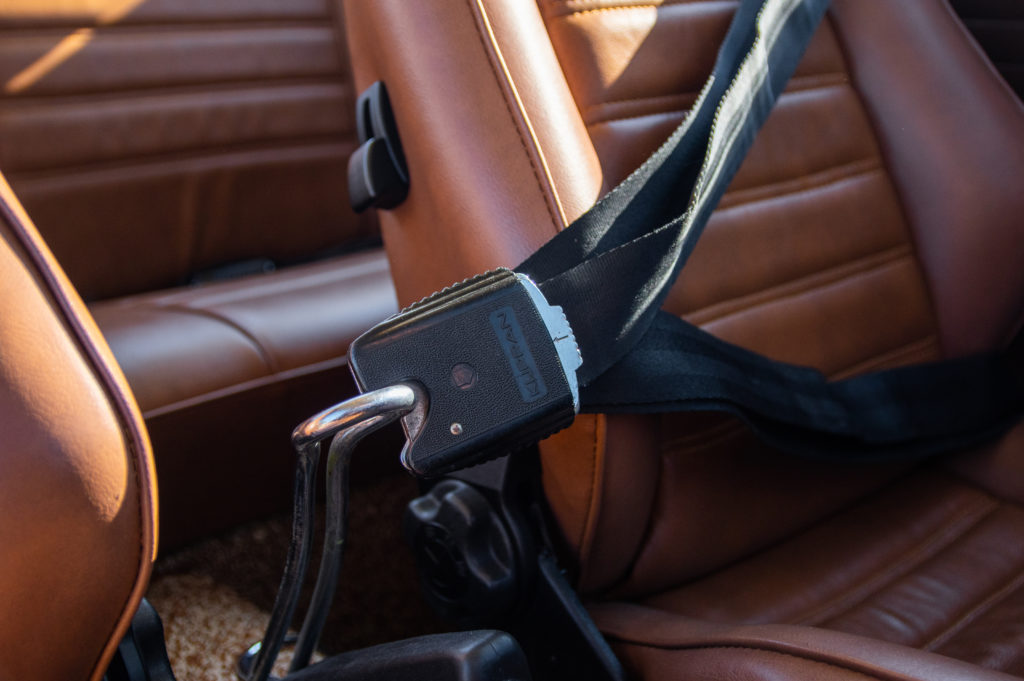
Aftermarket shoulder-harness seat belts
In 1969, the moon had only recently been visited; the Beatles were still together; Jimi Hendrix, Janis Joplin, and Jim Morrison were still alive; and an obscure auto marque from Germany was building overpriced but exceptionally well-driving sport sedans. The 02 Series were the cars by which a generation of Americans discovered BMW. It was an era in which, thanks to Max Hoffman, BMW solidified its presence in the U.S. market and laid the foundation for all of the greatness that would follow.
When I sat down in that Recaro seat, snapped the shoulder harness onto the raised metal ring, and put my hands on that wooden steering wheel, I couldn’t help but feel all that—and for a BMW enthusiast, there are few better feelings!
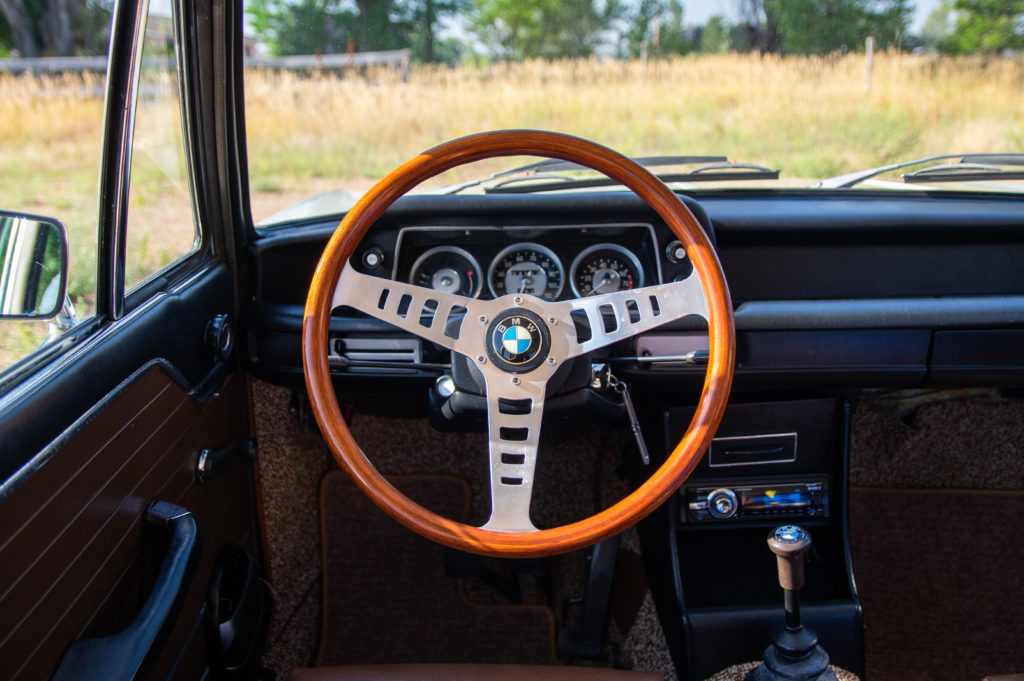
Can you find the choke knob?
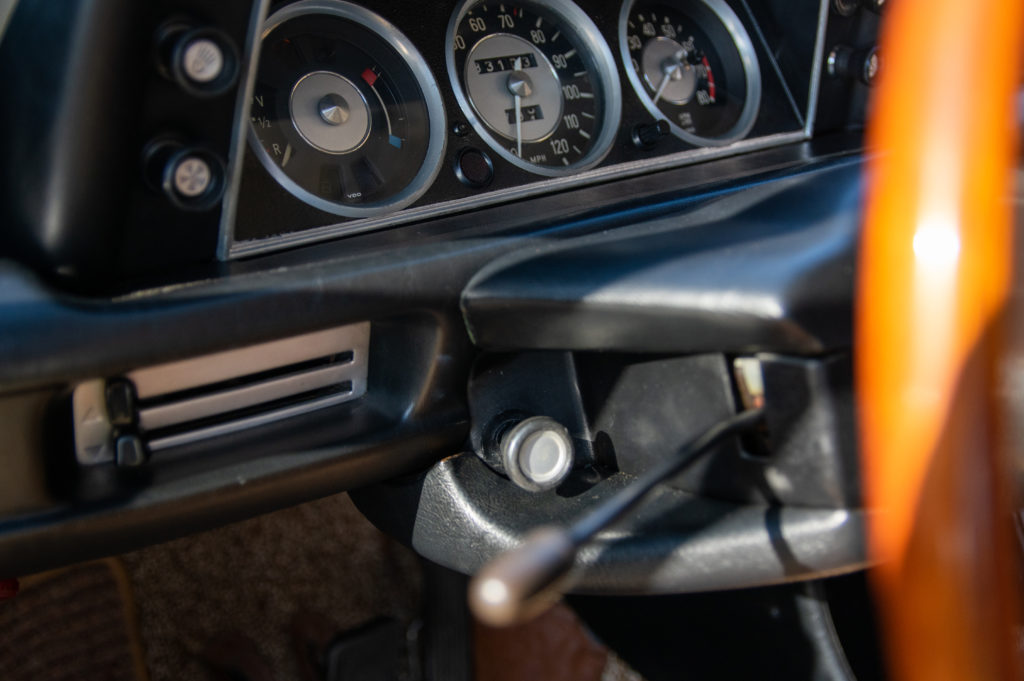
The engine coughed and sputtered on the cold start, but I soon realized that there was no automatic choke like those in later 2002s. Once I found the choke knob (hidden below the steering wheel), it started right up with the familiar tinny idle of an M10 engine, and then it purred like a kitten. Once it was warmed up, out on the open road, the nearly-half-liter displacement difference from a 2002 was evident, but the little 1600 had a certain eagerness to it. (I would find out later that this may have been in part to a Schrick camshaft and a tii exhaust.) It begged me to drive it hard, and I was happy to oblige.
Together, the 1600 and I nipped at the heels of the modern driving world. The simple act of getting up to the cruising speed of modern traffic was an rpm-exercising hair-on-fire intake and exhaust symphony that was more exhilaration than acceleration. Never has taking so many seconds to reach 60 mph felt so utterly exciting!
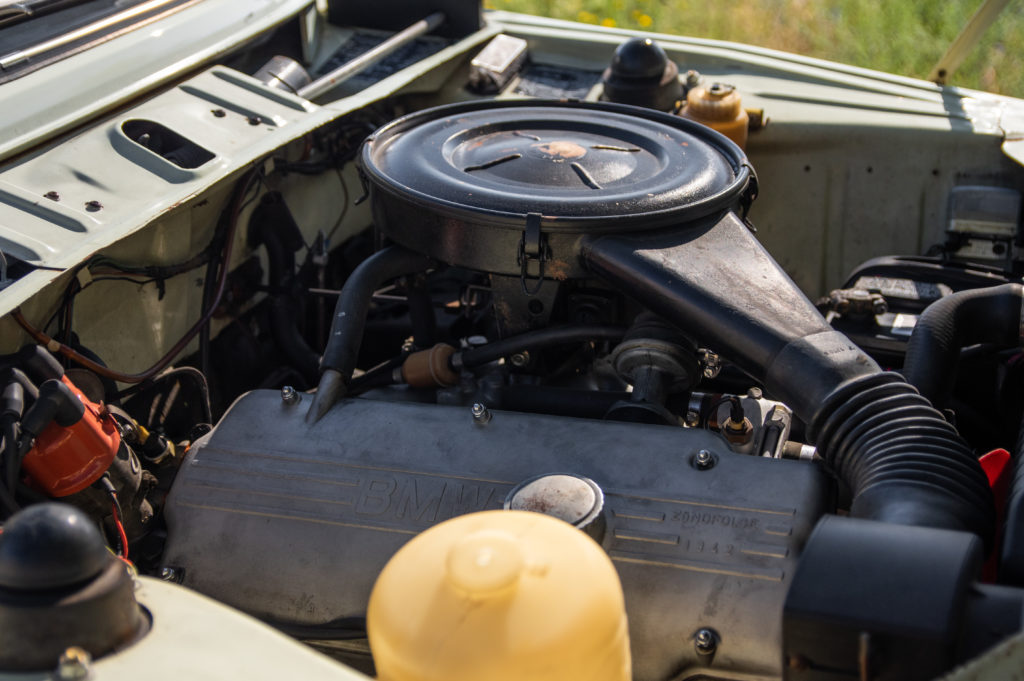
1,573 cubic centimeters may not be fast, but they sure are fun!
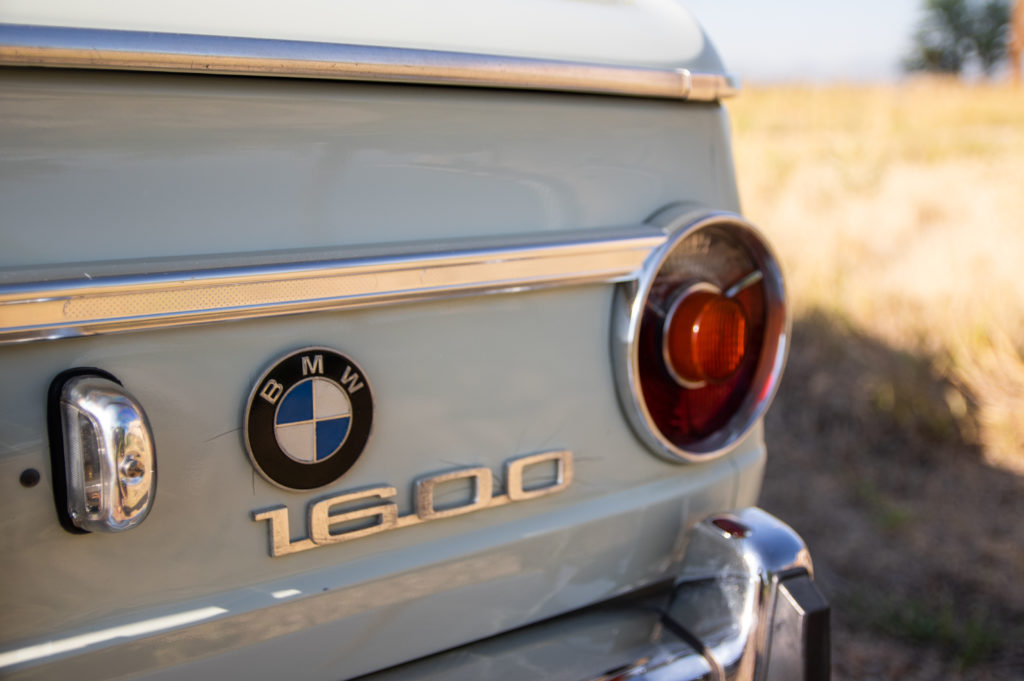
And once we got up to cruising speed, keeping up with modern traffic was a breeze, thanks to a five-speed conversion which someone had performed on this 1600. At 80 mph, it barely broke 4,000 rpm, with plenty more to go.
In the turns, the modern motoring world became my playground. The 02 Series chassis, riding on mild lowering springs and Koni sport shocks, did things that shouldn’t be possible on skinny tires and thirteen-inch wheels. In true momentum-car fashion, I could set up my line, lifting or braking as little as possible, turn in, settle the rear end with the throttle, and pin it through the apex to the exit.
To most modern drivers, a turn is an annoying distraction from the infotainment system; to the 02 Series driver, the turns are the entertainment. And when you go ripping by those modern drivers with your tires a-blazing, you are met by expressions of shock and astonishment. There are few more enjoyable pursuits than out-driving a modern car in a classic BMW, and I relish the moment when the opportunity presents itself.
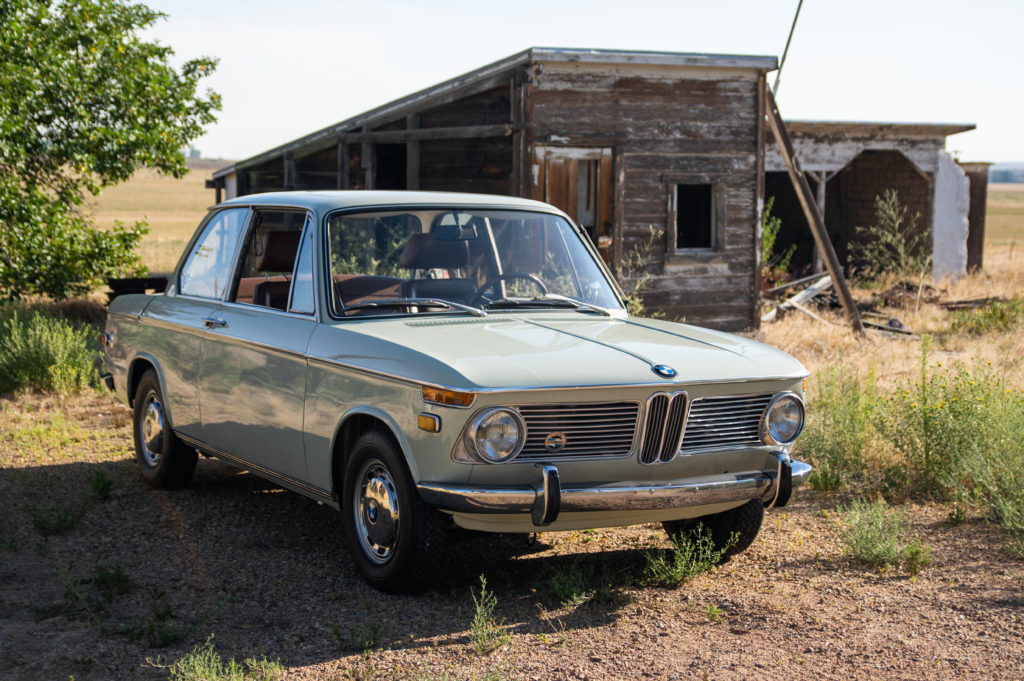
The 1600-2 is a timeless classic BMW.
If I’m honest, I’ll admit that my experience in the Florida Green 1600 could be had in any 02 Series—but there was still something special about this car. For a rare moment, the car and I connected and shared an experience that was truly unique. It reminded me of why I love these old BMWs so much, and how special they can be. Some 50 years after this little 1600 made its way to our shores, it still has all of the qualities that made it so special. I was grateful to participate in a very small part of its story.
In short order, I found a new owner for the Florida Green 1600, one who will share their own connection and experiences with it for years to come. But I certainly won’t forget mine anytime soon.—Alex McCulloch
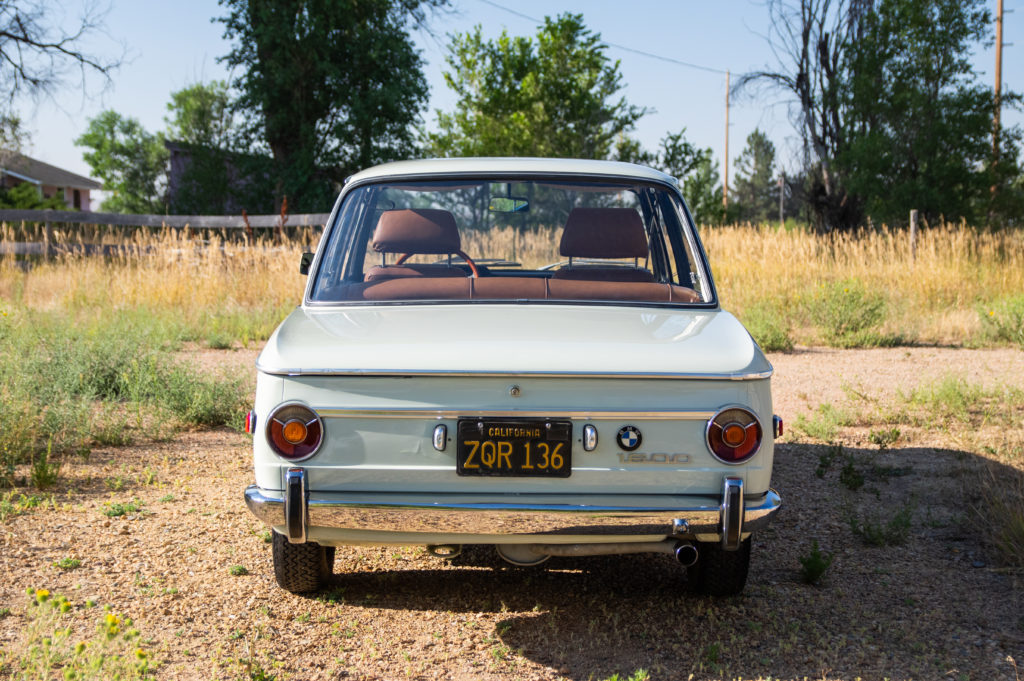
Off it goes onto the next part of its journey.
[Photos courtesy Peter Thompson.]

